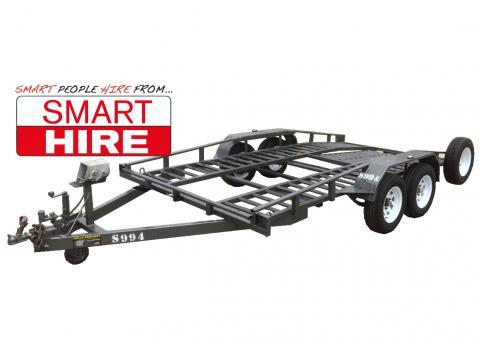In general, towing trailers isn’t a task you do on a daily basis. For that reason, it’s something you need to research or get some guidance on before you even attempt such a challenging job.
You may be borrowing your friend’s trailer to move your furniture across town to your new home. Perhaps you’re moving your damaged vehicle by making use of the car trailer hire services Melbourne has available. Either way, it can be a bit stressful.
9 Common FAQ’s about Towing a Trailer in Australia
Like so many other people who aren’t familiar with towing regulations and methods, you’ve probably had several questions. Here are a few common, frequently asked questions about the ins and outs of towing a trailer in Australia.
Question 1: Is It Cheaper to Move Furniture Across State With a Trailer?
Moving across state in Australia can be very costly. Experts advise that it’s much cheaper to use a furniture moving trailer towed by a reliable vehicle to transport your goods across state. Compared to the excessive charges that go along with furniture moving, savings could be monumental.
Question 2: What is The Difference Between a Single Axle and Double Axle Trailer?
Getting the right trailer for the job at hand is crucial in ensuring the safety of both the vehicle doing the towing as well as the actual trailer.
A single axle trailer is lightweight and only has one axle with a wheel connected on each end. In contrast, a double axle has two axles placed close together to distribute the weight more evenly. Double axles are more suited to long distance towing as they have a much stronger suspension.
Question 3: Is It Better to Use a Cage Trailer?
Cage trailers have built-up sides, resembling a cage and are ideally suited for moving furniture or rubbish removal. The sides keep the items you’re transporting from falling out, and it’s easier to tie the items down because you use the cage sides to tie your ropes onto. They’re also suitable to be used with standard passenger cars.
Question 4: Can You Tow Two Trailers Behind a Car in Australia?
Towing two trailers behind a car isn’t legal in Australia. Chances are your vehicle isn’t heavy enough to tow the weight of two trailers. This would also be too risky on the freeway as you’d have to control the vehicle you’re driving as well as two trailers with a link in between. The risk is simply too great. It’s advisable to make additional trips or hire a trailer big enough for the required job right from the start.
Question 5: How Fast Can I Drive While Towing a Trailer in Australia?
In all Australian states the legal speed limit outside built up neighborhoods is 100km/h. This law will apply unless otherwise specified. Experts advise against driving too fast with a trailer and full load.
Question 6: Are Homemade Trailers Legal?
The majority of Australian states require homemade trailers to be titled. Others may not register these trailers at all. Unless you’re certified in this field, it’s advisable to not go this route. There are reputable dealers all over Australia where you can hire the right trailer for the job and your vehicle.
Question 7: How do I Keep My Vehicle’s Transmission Cool While Towing?
If you’re not regularly towing trailers, you might not know that your vehicle’s transmission actually heats up with the extra pressure of the load. The best way to keep your transmission cool and functioning properly is to use a lower gear.
If your towing requires you to drive on the freeway, experts suggest you use a non-overdrive gear. If your vehicle has a four-speed transmission, you’d then use the third gear.
Question 8: Can I Use Cruise Control When Towing a Trailer?
Trailer experts and auto manufacturers recommend that you not use cruise control while towing a trailer. This is irrespective of how lightweight the trailer may be. Your vehicle speed drops as you drive uphill and it will be easier for you to control with the speed control off.
Question 9: What is the Widest a Trailer Can Be?
The general rule with regard to trailer load width is 102 inches. Height limit is also 102 inches. The maximum weight is generally 46 000 pounds. The length may not exceed 53 feet. Your load should not protrude past the top or sides of your trailer. This makes getting the right trailer for the specified job all the more important.
In Conclusion—Planning and Preparation is Key
It’s important to do the proper research before attempting to tow anything anywhere. Consider getting one of the best recovery straps out there. Ensure that your vehicle is capable and the trailer you’ll be using is suited to the items you need transported. By doing basic checks and adhering to the general towing guidelines you’ll have a hassle-free trip!
